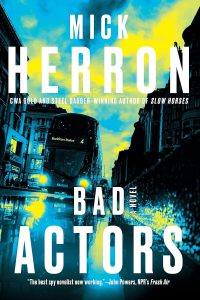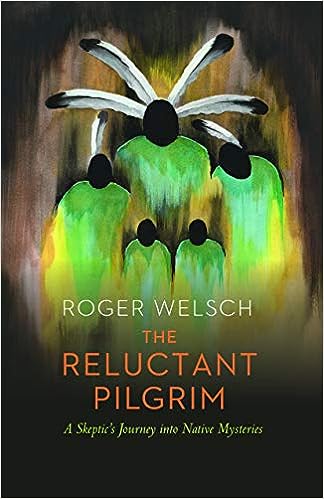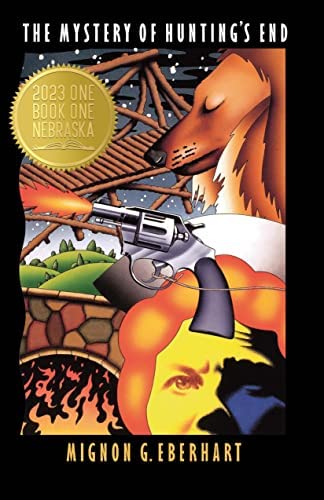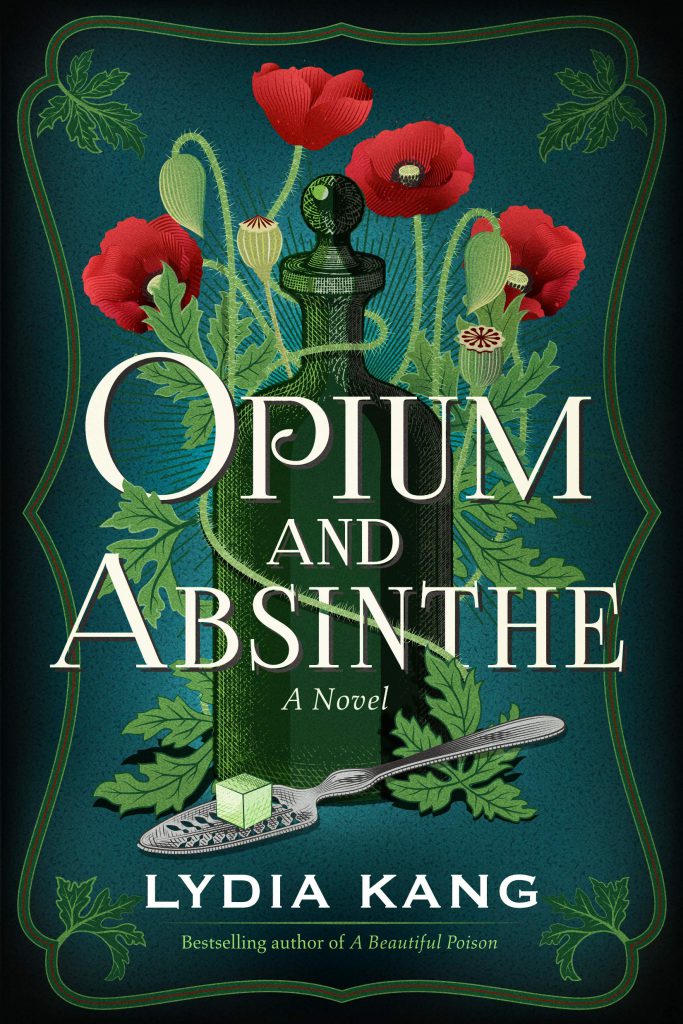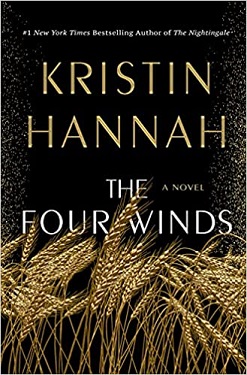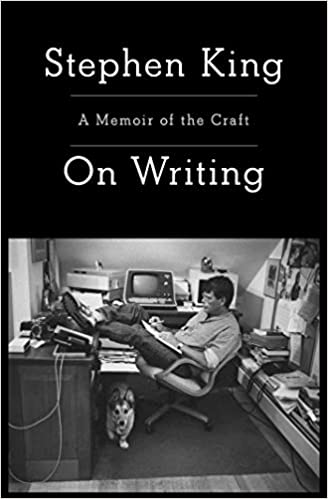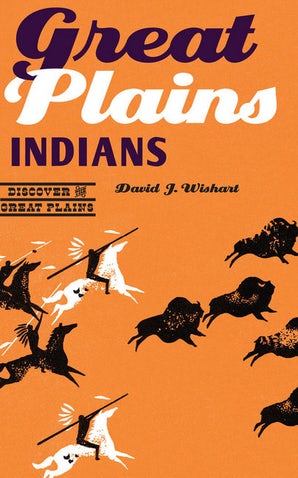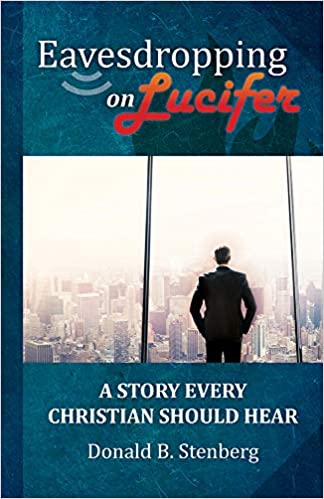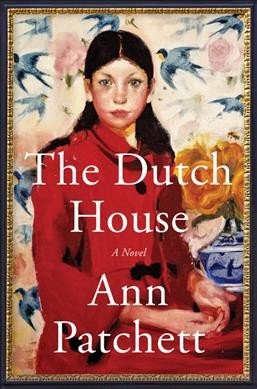Search the Blog
Categories
- Books & Reading
- Broadband Buzz
- Census
- Education & Training
- Friday Reads
- General
- Grants
- Information Resources
- Library Management
- Nebraska Center for the Book
- Nebraska Libraries on the Web
- Nebraska Memories
- Now hiring @ your library
- Preservation
- Pretty Sweet Tech
- Programming
- Public Library Boards of Trustees
- Public Relations
- Talking Book & Braille Service (TBBS)
- Technology
- Uncategorized
- What's Up Doc / Govdocs
- Youth Services
Archives
Subscribe
Author Archives: Rod Wagner
Friday Reads: At Wit’s End: Cartoonists of The New Yorker – Photographs by Alen MacWeeney Words by Michael Maslin
The New Yorker magazine celebrates its 100th anniversary this year. At Wit’s End is perfectly timed to showcase cartoonists and cartoons that have been a consistent part of the magazine since its inception. Wit’s End is a truly fun book and one that diverts from books many of us typically read. The New Yorker has provided readers with hundreds of thousands of cartoons from over 700 cartoonists that delight, capture, and depict the happenings of the time. Whether pop culture, politics, or other, The New Yorker cartoonists drill into topics of the day with skilled artwork and clever captions. With or without captions, cartoonists tell stories within the art of a single-frame cartoon.
It might be that I’ve been a decades long subscriber to The New Yorker magazine for its cartoons and covers. And that may be why I had to get a copy of At Wit’s End after reading a review. Every once in a while, it is fun to spend time with a book that amuses and fascinates. I found that in this book.
In At Wit’s End, Michael Maslin, a cartoonist himself, profiles 50 some of The New Yorker cartoonists selected from the hundreds whose cartoons have been published in the magazine over the past century. Some of the cartoonists have been contributors over many decades and some are newer and more recent magazine cartoon contributors. Ed Koren, for one, is among just a couple of dozen who have sold more than two thousand drawings. A typical reader likely knows little about the cartoonist but will readily recognize their style. That’s why it is a joy to learn about the cartoonist behind the cartoon aptly profiled by Maslin. The cartoonists are uniquely creative with atypical personalities, even eccentric perhaps.
The cartoonist profiles are complemented with Alen MacWeeney’s photographs and a sampling of single-panel cartoons depicting the cartoonist’s style. The New Yorker readers no doubt have their favorite cartoonists. Mine include George Booth, Charles Addams, William Steig, David Sipress, James Thurber, and Robert Mankoff (The New Yorker cartoon editor for over two decades), and there are many more. For the record, mentionable are a couple of well-known cartoon captions – Peter Steiner’s “On the internet, nobody knows you’re a dog” and Bob Mankoff’s “No, Thursday’s out. How about never – is never good for you?”
From 1997-2012 The New Yorker published an annual Cartoon issue. The magazine’s Cartoon Caption Contest began in the 1998 Cartoon issue and has continued as a weekly feature since 2005. The feature, near the back pages of the issue, includes the new contest cartoon, three finalists, and the winning caption.
Cartoonist Michael Maslin is a notable writer as well and whose Ink Spill Blog is “The go-to chronicle of all things New Yorker cartoon.” Photographer Alen MacWeeney is an internationally celebrated photographer whose photographs accompany cartoonist profiles in At Wit’s End.
MacWeeney, Alen, and Maslin, Michael, Alen. At Wit’s End: Cartoonists of The New Yorker. Clarkson Potter, 2024.
Friday Reads: The Long March Home: A World War II Novel of the Pacific by Marcus Brotherton and Tosca Lee.
The Long March Home is a remarkable story that blends themes of friendship, courage, survival, and sacrifice against the backdrop of World War II in the Pacific. The novel explores the strong bonds formed in youth, the experience of military service during wartime, and the realities of being a prisoner of war. The Long March Home is the One Book One Nebraska selection for 2025.
Written by two accomplished and creative authors with appreciation for historical detail and storytelling, The Long March Home is a tribute to the resilience of the human spirit, inspired by real events and actual experiences. The authors skillfully explore the inhumane conditions of prisoner-of-war camps, where starvation, cruelty, and unimaginable suffering were daily realities. At the center of the story is the enduring friendship of three young men (Jimmy, Billy, and Hank) who, after high school and as teenagers in Mobile, Alabama, enlist in the Army together, only to find themselves caught in the aftermath of the Japanese attack on Pearl Harbor. Billy’s sister, Claire, is integral to the story as well.
The novel moves between the characters’ lives in Mobile and their experiences in the Philippines, beginning with their arrival in a tropical paradise and then capture, the cruelty of the Bataan Death march and the brutal occupation by the Japanese army. The book shifts between home life in Mobile and the Pacific war scenes. Friendships are tested over four years of war and hardship.
There are numerous World War II fiction and non-fiction books set in Europe, and not as many in the Philippines or in Japan. The Long March Home is an excellent addition to this historical literature.
Marcus Brotherton is a New York Times bestselling author and journalist. Brotherton’s home is in Washington state.
Tosca Lee is a New York Times bestselling author with numerous awards including a Nebraska Book Award which was also a Goodreads Choice Awards semifinalist for Best Mystery/Thriller. Tosca Lee’s home is in Nebraska.
Brotherton, Marcus, and Lee, Tosca. The Long March Home: A World War II Novel of the Pacific. Revell. 2023.
My Nebraska: The Good, the Bad, and the Husker by Roger Welsch
Roger Welsch was a fine folklore scholar, writer and an even better storyteller. In My Nebraska, Welsch fills the pages with his keen observations, wit, and appreciation for the people, the land, and all things that are characteristic of this middle of the country state. As the book title implies – there is the good, the less than good, and there is the Husker. The book presents Nebraska stories told from Welsch’s unique personal experiences and his commentaries about Nebraska.
I have read several of Welsch’s books. Of those, this one is a favorite – an enjoyable read from start to finish. There are redundancies, but that is okay. A story well told is worth telling again. For Welsch, this is a gift. Some observations will be a surprise; there are some that readers will not agree with, and others will be a delight.
One of the takeaways is that Welsch was an observer who saw things many of us overlook. Take his thoughts on travel through Nebraska. Take the slow road, not the slab – as Welsch describes the term truckers use for I80. He writes about his favorite roadways with inspiring topography to slow down and enjoy. If one follows his advice their trip in and through Nebraska will never be the same, and it will be better.
It seems Welsch’s best years were in the rural Dannebrog community and near the Loup River where he made his home, tinkered with tractors, and enjoyed the company of his many friends. He even has a street named after him in Dannebrog – Roger Welsch Avenue. Notable is that he made and had many friends from everywhere. Notable too was his association with Charles Kuralt and Roger’s “Postcards from Nebraska” segment on CBS Sunday Morning. Welsch and Kuralt were kindred storytellers.
Nebraskans and others, current and future, will gain special perspective about this unique state. There is Roger’s personal story – early life in Lincoln, college and teaching, his move to rural Dannebrog, and his many friends near and far. He has much to say about Nebraska’s weather, community and regional differences across the state, water and rivers, culture and art, and far more.
Welsch mentions being asked if he would ever write a memoir. His thought and response was that his many books written over many years were his memoir. My Nebraska is a good example. He didn’t write a memoir, as such, but his wealth of writings and stories is a genuine substitute.
Full of stories and anecdotes, this book is a great companion to other Nebraska related books and to Welsch’s own forty plus books and numerous articles.
Welsch, Roger. My Nebraska: The Good, the Bad, and the Husker. University of Nebraska Press. 2011.
Friday Reads: 2020: One City, Seven People, and the Year Everything Changed by Eric Klinenberg
If there were a year that many would like to forget, it would likely be 2020. The worldwide pandemic that brought the spread of a novel virus, originating in rural China, sparked global disruption and changes that will continue into the future. In his new book, 2020, sociologist Eric Klinenberg chronicles the experiences, stories, and research associated with the pandemic, public health measures, economic peril, political distress, and societal changes.
The COVID pandemic, George Floyd’s death and the social justice movement, and the presidential election were prominent in this historic year. Klinenberg observes, “This story is not over. We are living through the long 2020.” 2020 includes an extensive presentation of data and is global in scope. However, as broad and sweeping as it is with comparisons and contrasts, a unique feature is the personal stories that reflect on individuals and their experiences living through this extraordinary time. Experiences depend on individual circumstances. Location, lifestyle, and access to resources all played a significant role. A takeaway is how these disruptive events affected each individual in their own personal way.
Disturbing was the growing divide over policies and actions to address the pandemic. Policies and actions varied from neighborhood, community, state, national, and global. The United States lacked consistency in providing direction. States differed in the extent of public health safety policies – some highly restrictive and others much less so. Communities varied based on local leadership and circumstances. Overall, the pandemic strained public trust in both government and science, leading to deep divisions over measures like mask mandates, social distancing, lockdowns, and vaccinations.
Klinenberg profiles seven New Yorkers including a new bar owner, an elementary school principal living in a multigenerational home, a transit worker, a local political aide, a retired district attorney turned neighborhood organizer, and others. Notable is the Staten Island bar owner who declared his bar an autonomous zone and refused to follow New York City’s health safety requirements. Questionable as his actions were, we can sympathize with his dilemma – opening a new business and having it shut down soon after. Others interviewed spoke of depression, food insecurity, and employment uncertainty. For others – the vulnerable – those living in high-density neighborhoods, nursing homes, those lacking homes with the resources school age children needed to participate in online education.
Despite the negative, there are remarkable examples of compassion and courage, as well as the day-to-day efforts of many to provide care for family, friends, neighbors – donations, pantries, deliveries, childcare, and more. To be appreciated are the health care workers, teachers, and all in “essential” occupations with close exposure to illness.
Klinenberg’s book is difficult to read because it is a reminder of the tragedy of pervasive illness, death, disruption, and economic uncertainty. Consequences have lingered and polarization continues. A troubling question remains whether we are now better prepared and less vulnerable for the next pandemic.
Eric Klinenberg is Professor in the Social Sciences and Director of the Institute for Public Knowledge at New York University. Among his other books is Palaces for the People, published in 2018. In regard to Palaces for the People, Carla Hayden, Librarian of Congress, commented that “Klinenberg is echoing what librarians and library patrons have been saying for years: that libraries are equalizers and absolutely universal.”
Klinenberg, Eric. 2020: One City, Seven People, and the Year Everything Changed. Knopf. 2024.
Friday Reads: Bad Actors by Mick Herron
I don’t remember whether it was the Apple TV+ series or a book that started my interest in Mick Herron’s spy novels. In my view, they are equally good. Bad Actors is the eighth and latest in Herron’s Slough House series. There are also four novellas. Slough House is purgatory for disgraced British MI5 service rejects placed apart from headquarters to serve out their careers. Central to all books in the series is the Slough House cast of colorful characters referred to as the “Slow Horses” – the B-team, if you will. In Bad Actors you will find some of the same characters and new ones as well – flawed as they all are. There is also the usual clash of personalities, backstabbing and insults, along with quick and sharp dialogue.
Mick Herron is kind of, sort of, somewhat, loosely in the company of many good and popular authors from among the espionage genre. Herron’s writing is especially witty and unique. These are intricate spy books that are also full of dark humor.
The Bad Actors narrative evolves from the growing tensions between the UK and Russia and a series of mysterious and supposedly unconnected events. A protest at a London arms fair leads into violence, a high-level politician disappears, and a shady organization known as “The Outfit” emerges to manipulate events from afar. As it happens, dispatched on a sideline task, Jackson Lamb’s “Slow Horses” find themselves in the midst of the chaos – a charade of conspiracy involving the upper echelons of government. Jackson Lamb is the offensive, slovenly leader of this group of misfits. Imagine Jackson Lamb with the well-worn trench coat, loosened necktie, longish unwashed hair, and days of unshaven face. A veteran intelligence officer, Lamb is a secretive, perceptive and shrewd spook. As outcast as they are, and as ill viewed, Jackson’s crew manages to pull it together and come out on top in the end.
The Apple TV+ series enriches Herron’s books, creating interest and adding multitudes of Herron fans.
Herron, Mick. Bad Actors. Soho Crime. 2022.
Friday Reads: The Reluctant Pilgrim by Roger Welsch
Roger Welsch’s The Reluctant Pilgrim is a curious and relatable book, a book of inter-connected stories from Welsch’s forty-year exploration of Native American community and spirituality. Known for his humor, this is not a book of humor. It is a thoughtful reflection on personal experiences and associations as an adopted member of the Omaha Tribe. Welsch’s journey expounds on the unexplainable, mysterious, the physical – round stones, eagle feathers, buffalo skulls, coyotes, and crows. In short, a phrase he repeats often “Something Is Going On.” Throughout, Welsch shares the inspiration and wisdom he experiences in his many associations with Native American communities, Native elders, ceremonies, and nature.
I confess to reading only this book among the forty plus Welsch wrote over many years. I do have several on the bookshelf and I look forward to reading them. Like many others, I’ve enjoyed Welsch’s public presentations. Storytelling was his special gift whether as a speaker or as a writer. His humor is notable but his generosity, perspective, wisdom, and devotion to the stories of the Great Plains stands out as truly remarkable.
Welsch left a tenured professorship at the University of Nebraska-Lincoln to move with his family to a small 60-acre property near Dannebrog, Nebraska. From there he intended to pursue a writing and speaking career – and that he did. Like many, I remember Roger Welsch’s twelve plus years as a correspondent presenting his biweekly “Postcards From Nebraska” on CBS News Sunday Morning.
It’s interesting that Roger Welsch, the recognized dean of storytellers, has a nearly uncountable number of stories about his own life that have become a part of our folklore. His interests were eclectic. He developed an interest in tractors and wrote about them. I gave away Busted Tractors and Rusty Knuckles to a farmer family member. Welsch founded the Liars Hall of Fame and he served on his county’s weed-control board to be a voice for preserving native grasses and other plants.
Others who have written about Welsch’s books recommend that The Reluctant Pilgrim be read with his earlier book, Touching the Fire.
Roger Welsch. The Reluctant Pilgrim: A Skeptic’s Journey into Native Mysteries. Lincoln: University of Nebraska Press. 2015.
Friday Reads: The Mystery of Hunting’s End by Mignon Eberhart
The Mystery of Hunting’s End is this year’s selection for the One Book One Nebraska program. Published in 1930, Mignon Eberhart chose the Nebraska Sandhills region near Valentine for the remote setting of this mystery novel. Hunting’s End is a lodge owned by the wealthy Kingery family. There, a small and curious group comes together by invitation, the same group present five years earlier when a death occurred. Was it by a heart attack or was it murder?
The Nebraska Sandhills, where Mignon G. Eberhart lived as a newlywed, inspired the setting of this mystery. Matil Kingery’s intent in this reunion is to discover which one of her guests murdered her father.
Posing as another guest is detective Lance O’Leary. At his recommendation, Matil has arranged for Nurse Sarah Keate to care for Aunt Lucy Kingery at Hunting’s End – a challenging assignment, as it turns out. Keate is a perceptive and persistent sleuth and an able O’Leary ally. Nurse Keate has a recurring presence in Eberhart’s novels.
Gathered together at the lodge, the guests are sealed from the outside by a November snowstorm. A dog named Jericho lurks about, and a stray cat is curiously present for each discovery of a new death.
This book keeps the reader guessing as to who is behind the murders at Hunting’s End. Why were these murders committed and who is the killer? The reader will be alert to clues leading to the identity of the guilty party.
I found The Mystery of Hunting’s End to be an enjoyable and fun read. It is true to a good mystery book – colorful characters and a plot that continues to surprise and keep the reader guessing – who did it?
Mignon Eberhart was a prolific writer, one of the most popular mystery writers of her time with a career spanning from the 1920s to the 1980s. Eberhart published over 50 novels and numerous short stories during her career, and with several adapted for film and television. The 1938 movie, Mystery House, is based on The Mystery of Hunting’s End. Eberhart received the Grand Master Award from the Mystery Writers of America and was a past president of the Mystery Writers of America.
For more about Mignon Eberhart, read Nebraska Wesleyan University Professor Rick Cypert’s America’s Agatha Christie: Mignon Good Eberhart, Her Life and Works. Cypert contributed discussion questions for The Mystery of Hunting’s End. Discussion questions can be found on the Nebraska Library Commission website.
Mignon G. Eberhart. The Mystery of Hunting’s End. Lincoln: University of Nebraska Press. 1998. ©1930.
Friday Reads: Opium and Absinthe by Lydia Kang
It seemed good timing to read Lydia Kang’s Opium and Absinthe soon before Halloween. The vampire connection was enticing. The historical novel takes place in New York City in 1899, the year that Bram Stoker’s Dracula was published. Lucy Pembroke is found dead in an alleyway by puncture wound and drained of blood on the eve of her marriage ceremony. Mathilda (Tillie) Pembroke is Lucy’s younger sister. Tillie is determined to find the murderer. An overprotective mother and a controlling grandmother hamper her efforts. Tillie must go to imaginative and extreme lengths to escape the confines of her home to seek answers to her many questions about the murder.
Tillie’s challenges include an opium and morphine addiction that came about following a horse-riding accident. Intended to provide pain relief, addiction followed and continued. Opium and Absinthe places drug addiction as a central theme. Heroin is also notable, introduced by Bayer as a cough remedy. At the time, all were legal and commonly prescribed.
An intriguing mix of characters emerge including New York’s rich and privileged and the working class poor. The Pembroke family is among the city’s elite. The mystery unfolds at a steady pace and, at least for me, comes to a surprising end.
The book is included among CrimeReads Best Historical Fiction of 2020.
Described as among the great virtuosos of the crime genre, Lydia Kang is an author and an internal medicine physician. Her writings include historical mysteries, popular history, young adult sci fi, essays and poetry. Kang’s most recent book, Patient Zero: A Curious History of the World’s Worst Diseases, co-authored with Nate Pedersen, is a 2022 Nebraska Book Award winner for nonfiction – popular history. Kang’s The November Girl won the Nebraska Book Award for Young Adult Fiction in 2018.
Kang, Lydia. Opium and Absinthe: A Novel. Seattle: Lake Union Publishing. 2020
Friday Reads: Son of a Gamblin’ Man by Mari Sandoz
Son of a Gamblin’ Man is Mari Sandoz’s historical novel about the gambler, entrepreneur, promoter, controversial, bold, and visionary John J. Cozad. Book descriptions note that it is Robert Henri’s story. It is, but the book is every bit as much the story of an ambitious man who chooses to develop a community in mid-Nebraska near a 100th meridian sign, a Pacific Railway Act of 1862 benchmark. Every village, town, and city has its own story. The community that became Cozad, Nebraska, has an especially unique and colorful history. While fictional, Son of a Gamblin’ Man includes real people, experiences, and events.
The book evolves from the 1870s with John J. Cozad’s relentless recruitment of settlers to establish this new mid-Nebraska community. Described with much exaggeration, the imagined community was not the paradise described and promised to easterners hoping for a better life. Settlers experienced – as settlers did elsewhere – harsh winter months, drought, illnesses, hunger, massive grasshopper invasions, prairie fires, lawlessness, and more. Some left. Others stayed on to overcome the many challenges of life in a new and growing community.
There were also the challenges, clashes, and violence that emerged between cattlemen and settlers. The need for feed and the open prairie were an on-going source of conflict. And there was the early rivalry that developed between Cozad and Plum Creek (later to become Lexington).
The book is rich in detail with descriptions of family and community life in the latter part of the 1800s. Within is the story of the Cozad family, friends, neighbors, and enemies. As described in the book’s introduction, the story is essentially that of Robert, John Cozad’s youngest son. Robert, still in his teen years, was given responsibility for local management of family business and properties. These tasks were needed during his father’s frequent business absences and his brother’s location in Denver selling hay. Robert had an early fascination with stories and art. He imagined, wrote stories, and drew throughout childhood. Later came fame as an internationally recognized artist and teacher. The Robert Henri Museum, in Cozad, is a remarkable destination for viewers of his art.
Sandoz, Mari. Son of a Gamblin’ Man: The Youth of an Artist. University of Nebraska Press. 1960.
Friday Reads: The Four Winds: A Novel by Kristin Hannah
The Four Winds is a historical novel with true to life elements from a period of deep despair. Kristin Hannah’s book is about hard times, America in the 1930s – the Great Depression, the Dust Bowl, with millions of people unemployed and struggling to meet day-to-day needs. It is a book about survival, family relationships, courage, and endurance.
The Four Winds reminded me of John Steinbeck’s The Grapes of Wrath, a book I read many years ago and among the most disturbing I’ve ever read. In Hannah’s book, it is the Martinelli family. In Steinbeck’s, it is the Joads.
The Four Winds is told mostly through the eyes and voice of Elsa Martinelli. The story begins in the Texas Panhandle, a rural community – a typical small town with surrounding farms. The story moves from the prosperous times preceding the Great Depression to years of poverty and hardship as drought and dust storms transform millions of acres of landscape and turn the economy upside down. Martinelli, married with young children, struggles to overcome life-robbing elements. Family relationships are tested. There is betrayal, and there are strained relationships between Elsa and her headstrong teenage daughter Loreda. Tension grows with the seemingly never-ending drought and the prospects of leaving the farm to join the thousands migrating westward for a perceived better life in California.
Readers describe the book as depressing, but it presents a compelling and difficult to forget story. Libraries and librarians contribute to the story, and in a positive way.
The audiobook (Macmillan Audio) includes an interview with Kristin Hannah and skilled narrator Julia Whelan. The interview offers interesting and helpful historical background – the author’s research and approach to writing the novel, and the narrator’s preparation and narration methods.
Among Kristin Hannah’s books are the notable The Nightingale, The Great Alone, and Winter Garden.
Hannah, Kristin. The Four Winds: A Novel. William Morrow. 2021.
Friday Reads: Stephen King. On Writing.
I have read only one Stephen King book and that is On Writing: A Memoir of the Craft. I read the book several years ago and recently listened to the twentieth anniversary edition audiobook (narrated by King). The title suggests that the book covers more than writing. It is every bit as much a memoir, and an interesting one indeed. Included are experiences from early childhood growing up in a financially stressed home, and his early years as a struggling writer contributing essays and short stories for magazine publication. There is also his lengthy and difficult recovery from a near fatal accident.
Notable is the astonishing experience of being notified that his novel, Carrie, was accepted for publication by Doubleday and that he would receive a $2,500 advance against royalties. That happened while he was a lowly paid high school English teacher, and after his wife pulled his pages from the trash and encouraged him to keep writing. King thought he had written a loser. New American Library later purchased the paperback rights for $400,000. From there King has gone on to become one of the bestselling authors of all time.
King offers his views on writing as a craft with observations such as “When you write a story, you’re telling yourself the story. When you rewrite, your main job is taking out all the things that are not the story.” King says that he writes daily and strives for 2000 words per day. His encouragement to writers is to make writing a daily habit. He credits the Elements of Style (Strunk and White) as a basic and valuable source. Oh, and he dislikes adverbs. King is quoted as saying “I believe the road to hell is paved with adverbs.”
King has received nearly as many awards as he has published books. He has written over sixty novels, several non-fiction books, hundreds of short stories, and with hundreds of millions copies sold. Among many of King’s awards is the 2003 National Book Foundation Medal for Distinguished Contribution to American Letters.
The twentieth anniversary audio edition includes Owen King reading his essay, “Recording Audiobooks for My Dad, Stephen King.” This, along with King’s excellent narration, makes the audio version a good choice.
King, Stephen. On Writing: A Memoir of the Craft. Simon & Schuster. 2020.
Friday Reads: Great Plains Indians by David J. Wishart
David Wishart covers a vast span of over thirteen thousand years in his book, Great Plains Indians. Many know bits and pieces of this astonishing story. Professor Wishart dispels a number of myths and provides important detail and perspective in his coverage of Indian life on the Great Plains.
Wishart describes in his Great Plains Indians historical account the elements of geography, climate, perseverance, innovation, culture, and adaptation. The book is organized in four broad chapters: coverage of thirteen thousand years of Plains history, life circumstances of Plains Indians around the early nineteenth century, the period Lewis and Clark explored the Plains region, and the period that began and continued with regional control by the United States.
Significant are the impacts of disease (notably smallpox), food sources, climate, horses, guns, alcohol, and beginning contacts and conflict with people moving into the Great Plains region.
Wishart provides extensive coverage of the nineteenth-century and continuing to the present geographic and cultural dispossession of the Great Plains Indians. Within a hundred year span, the Plains Indians land base was reduced from an area extending from Canada to the Gulf of Mexico to a territory inclusive of a small number of reservations in Oklahoma and other Plains areas.
A slim book, Great Plains Indians is written in a clear, concise style. Professor Wishart’s Great Plains expertise, and notably that of Great Plains Indians, provides the reader with a rich and informative historical presentation.
Great Plains Indians is among books in the University of Nebraska Center for Great Plains Studies “Discover the Great Plains” series (Richard Edwards, Series Editor).
David Wishart is a professor of geography at the University of Nebraska-Lincoln. The author of many books, Wishart is the editor of Encyclopedia of the Great Plains (2004).
Wishart, David J. Great Plains Indians. University of Nebraska Press, 2016.
Friday Reads: Eavesdropping on Lucifer by Donald B. Stenberg
Many Nebraskans know of Don Stenberg as Nebraska’s three-term attorney general and two-term state treasurer. Mr. Stenberg retired from public office in 2019. He has now written his first book, Eavesdropping on Lucifer: A Story Every Christian Should Hear. Stenberg began writing the book several years ago, but it was after he left the state treasurer’s office that he had time to complete it.
A fictional work, Eavesdropping on Lucifer depicts the devil “the Boss” instructing and quizzing a young apprentice regarding strategies and methods for enticing people to stray from Christian principles and beliefs. Lucifer assigns Jonathan, the apprentice, with several projects to test his abilities and for the purpose of undermining some individuals with common life challenges. Not to be unchallenged, Jonathan’s efforts are resisted by God’s angel, named, of course – Angelica.
Notable are biblical, historical, and scientific references. Stenberg’s legal education, experience, and perspective are prominent elements in contrasting good and evil. The changing cultural landscape, court rulings, educational, and political issues are themes presented in the book.
Some reviewers have likened Eavesdropping on Lucifer to C.S. Lewis’s The Screwtape Letters, a book that deals with temptation and resistance.
Readers who identify as Christians, and those who do not, will find their own beliefs affirmed or challenged in this book.
A Tekamah, Nebraska native, Don Stenberg is a University of Nebraska-Lincoln graduate. Stenberg received a law degree, with honors, from Harvard Law School. He also received an MBA degree from Harvard Business School.
Stenberg, Donald B. Eavesdropping on Lucifer: A story every Christian should hear. Carpenter’s Son Publishing, Franklin, Tennessee. 2020.
Friday Reads: Prairie Forge by James Kimble
James Kimble’s Prairie Forge is the 2021 One Book One Nebraska selection. Prairie Forge is the story of a remarkable undertaking, launched in Nebraska, that inspired replication throughout the United States. With the United States entering World War II and the urgent need for resources, iron production was needed in ever-greater quantities for production of ships, planes, vehicles, weapons, and many other military necessities. Scrap metal was a critical need. That was the impetus for the Nebraska scrap metal drive of 1942.

Henry Doorly, Omaha World Herald publisher, inspired by a challenge from his wife, Margaret Hitchcock Doorly, initiated a scrap metal collection project in Omaha. With motivation and dedication, Doorly developed a plan to encourage Omaha residents to donate scrap metal for the war effort. Committing the resources of the Omaha World Herald and his staff, Doorly initiated and championed the effort that expanded across Nebraska.
While not initially expected, Doorly’s plan grew from its beginning in Omaha to spread statewide. Competition among counties, businesses, communities and schools resulted in 67,000 tons of scrap metal gathered within a three week period. It wasn’t easy; there were numerous challenges and obstacles to overcome. Success resulted from motivation, inspiration, persistence, commitment to the cause, and the competitive spirit that led Nebraskans to meet the challenging goals set for the project.
The Nebraska plan and its achievements became a model for a national scrap metal drive. Ultimately, the national effort resulted in volunteer “scrappers” collecting 5 million tons of scrap. Professor Kimble contends that “the Nebraska Plan was successful because it brought the war home to civilians, enabling them to participate directly in the battle as something akin to combatants. Students, retirees, housewives, blue-collar laborers, and even children felt themselves becoming integral parts of the war.” Leadership came from many people and organizations across Nebraska, and notable were the contributions of news outlets that provided information for community organizers and other volunteers.
The scrap metal drive may be an overlooked footnote in World War II history books, but it was a significant contribution to equipping the war effort and the eventual outcome.
One book reviewer remarked that Prairie Forge should be in every Nebraska public library. Nebraskans are encouraged to read this remarkable book.
James J. Kimble, Ph.D., is Professor of Communication, College of Communication and the Arts, Seton Hall University. An expert in the communication field, he is the co-producer of Scrappers: How the Heartland Won World War II, a feature documentary on the 1942 scrap drives. James Kimble’s hometown is Norfolk, Nebraska.
Kimble, James J. Prairie Forge: The Extraordinary Story of the Nebraska Scrap Metal Drive of World War II. Bison Books. 2014,
Friday Reads: The Dutch House by Ann Patchett
Ann Patchett’s Bel Canto was the first book that I read of this author’s many books. At the time, it was Lincoln City Libraries’ selection for its One Book – One Lincoln community reading project. That book led to reading several other of Patchett’s novels and memoirs. The Dutch House is Patchett’s eighth novel and shares characteristics of her previous books. Common are interesting settings, shifting timelines, well-drawn characters, blended families, and complicated relationships. Notable are Patchett’s skilled writing, wit, and imaginative stories. Dutch House (a mansion near Philadelphia) is both background and central to the story.
Somewhat akin to a fairy tale, Danny and Maeve Conroy, brother and sister, are the central characters (Hansel and Gretel?). There are the experiences of abandonment, banishment, the evil stepmother, and not-at-all evil stepsisters. Danny is the book’s first-person narrator. Danny’s and Maeve’s closeness over five decades evolves from their early childhood loss of mother and father. Interesting to me was the dialogue. Though, dialogue was especially notable because I listened to the audiobook narrated by Tom Hanks, perhaps more accurately described as performed by Hanks.
Patchett, Ann. The Dutch House. HarperCollins. 2019.
Friday Reads: For Love of the Game by Michael Shaara
With the absence of baseball in the spring of 2020 comes the opportunity for an alternative – a good baseball book. I came across a copy of Michael Shaara’s For Love of the Game among my books. I don’t recall that I actually read the book at some time in the past. I do remember the movie version that starred Kevin Costner as Billy Chapel, the baseball legend and sure to be future Baseball Hall of Fame pitcher, the book’s protagonist.
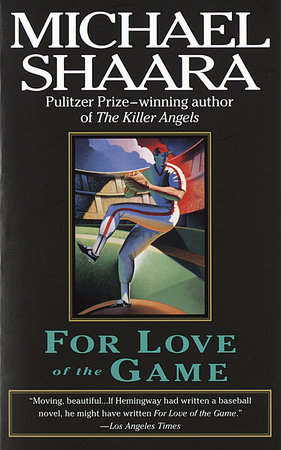
Having read the book recently, the book and movie versions have some significant differences. So it goes. In short, Chapel will pitch the final game of the season and likely his last as a major leaguer. This with the background of an uncertain personal relationship and also the knowledge that the team he has been with for his entire career is about to betray him.
Michael Shaara is best known for The Killer Angels, his Pulitzer prize-winning classic regarded as one of the best Civil War novels. For Love of the Game was published after Michael Shaara’s death. The book includes an introduction written by Sharra’s son, Jeff.
Michael Shaara began his career writing science fiction short stories. A family vacation to Gettysburg, Pennsylvania, in 1966 was the inspiration for his novel, The Killer Angels. It was his love for baseball that resulted in For Love of the Game.
Shaara, Michael. For Love of the Game. Ballantine Books, 1991.
Friday Reads: All the Gallant Men by Donald Stratton (with Ken Gire)

All the Gallant Men is the Nebraska Center for the Book’s 2020 One Book One Nebraska selection. Donald Stratton’s memoir stems from his remarkable experience as a naval seaman serving on the USS Arizona. Stratton was among the survivors from the December 7, 1941, Japanese attack on Pearl Harbor. The book is the only memoir written by a USS Arizona survivor.
Stratton’s book is not one that I would have selected to read on my own. I read it because of its nomination for the One Book One Nebraska program. It didn’t take many pages before appreciating Donald Stratton’s story. It is remarkable and inspiring. The book is much more than an account of the Pearl Harbor attack. Donald Stratton’s life is chronicled from his early years growing up in Red Cloud, Nebraska, joining the Navy following high school, military experience as a seaman. Later, Stratton traveled the world as a skilled commercial diver in the oil industry.
Stratton was severely burned during the Pearl Harbor attack but managed, along with a few others, to climb hand-over-hand on a rope to an adjacent ship, an astonishing feat considering the 70 feet length and the burned hands of the seamen and the fires burning below. The rope was thrown by Joe George, a sailor from the other ship. The rope throw was a heroic act that was never fully rewarded because George disobeyed an order to cut the lines that tied the two ships. Without the rope, these sailors would have perished. Stratton had a long and painful recovery. Even so, he endured and with determination reenlisted in the Navy. Offered a non-combat post, he instead chose to return to a battleship and rejoin the war in the Pacific.
Donald Stratton’s story is dedicated to preserving the memory of the men aboard the USS Arizona – those that died and those that survived. In Stratton’s words: “I have tried my best to express what I could about what I experienced that day. It isn’t enough, though, because it is only one side of the story. The other side lies an ocean away. When you read a statistic, like 2,403 dead, it says so little. A statistical death is only the skeletal remains of a life. Without flesh and blood; its beating heart or its winking eye; its quick wit or its contagious laugh.”
I hope that many Nebraskans will read All the Gallant Men and that the book will lead to more stories about the experiences and sacrifices of those who serve and have served.
Ken Gire deserves recognition for his collaboration with Don Stratton to bring Stratton’s story to print. How that came about is an interesting story in itself (see writer’s postscript).
Described by family members as a humble and generous man, Donald Stratton passed away on February 15, 2020.
Donald Stratton and Ken Gire. All the Gallant Men: An American Sailor’s Firsthand Account of Pearl Harbor. HarperCollins. 2016.
Friday Reads: “Low Mountains or High Tea” by Steve Sieberson

A few years ago, I read and enjoyed Steve Sieberson’s book, The Naked Mountaineer: Misadventures of an Alpine Traveler (University of Nebraska Press). Sieberson renews his adventure writing with an equally delightful Low Mountains or High Tea: Misadventures in Britain’s National Parks. Sieberson explains how he and his wife – lovingly referred to throughout the book as the Italian Woman – found themselves spending a summer in Britain with intention for travel to Britain’s national parks. A rental car, road maps and guidebooks were among the tools for their adventure.
Sieberson grew up in northwest Iowa. A family trip one summer from his rural home in northwest Iowa to Colorado began his lifetime fascination with travel and with high elevations. From there he read books on mountaineering, books that he found at his local library. His boyhood fascination has endured through his adult years. His summer adventure in Britain included mountain experiences, visits to far-flung places, pubs, teahouses, B&Bs, and much, much more.
What I found admirable and especially enjoyable about Sieberson’s book is his wonderful humor. Here’s an example: in conversation with a local about nearby trails, he writes “I said that I wasn’t much interested in the three-peak circuit, but that I just wanted to get to the high point and back in the most direct way possible. The tilt of her head and the lift of an eyebrow suggested that perhaps my slam-bam approach to her magnificent hills did not meet her approval.” Throughout, he pokes fun at British ways and novelties. His characterizations of the many people encountered and interactions are especially memorable.
Sieberson’s book is keenly descriptive and rich in detail. His descriptions of hiking and climbing are nearly photographic in detail. I’d like to know how he captured those many impressions and recorded them with such precision. Sieberson’s commentary on the people, places, customs, and food are more than travel guide worthy.
Sieberson’s law career provided opportunities for travel throughout the world. In recent years, he has added professor to his resume as a Creighton University Law School faculty member.
Sieberson, Steve. Low Mountains or High Tea. University of Nebraska Press, 2019.
Posted in Books & Reading
Tagged #FridayReads, Friday Reads, travel writing, University of Nebraska Press
Leave a comment
Friday Reads: “This Blessed Earth” by Ted Genoways
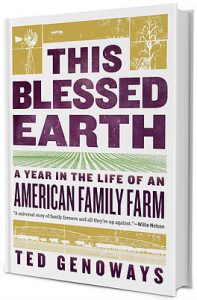 Ted Genoways spent a year following a Nebraska farm family – the Hammonds – and writes about his experiences and observations in his book, This Blessed Earth. Rick Hammond and his family raise soybeans, corn, and cattle on their fifth-generation farm near York. Genoways has said that the book intends a “kind of farm-level understanding of the systems that currently exist.” Genoways captures the challenges of farming and life experienced by this one farm family and, more generally, others.
Ted Genoways spent a year following a Nebraska farm family – the Hammonds – and writes about his experiences and observations in his book, This Blessed Earth. Rick Hammond and his family raise soybeans, corn, and cattle on their fifth-generation farm near York. Genoways has said that the book intends a “kind of farm-level understanding of the systems that currently exist.” Genoways captures the challenges of farming and life experienced by this one farm family and, more generally, others.
Genoways, a Nebraskan with long-standing family ties to farming, underscores the fact that farming is a huge gamble. In part, it is a matter of living with the uncertainty of weather, the unpredictability of global markets, federal farm policies, finances and more. These and many other challenges determine whether farming income exceeds expenses, falls below, or breaks even. A sudden storm, a downward turn in the markets, equipment breakdowns, and other unexpected events can change prospects dramatically.
Today’s farms are remarkably different from those of previous generations – farms covering thousands of acres, large and expensive tractors, and other equipment with computer screens, and GIS technology to determine spacing and measurement of soil moisture.
A bonus is the historical content and commentary that Genoways provides. Genoways writes about plant science, hybrid seeds, chemicals, water rights, irrigation, and much more. I grew up on a northeast Nebraska farm, decades ago. We raised soybeans among other crops. I had no idea that Henry Ford’s leadership, research, and initiatives were critical in the soybean becoming the dominant agricultural commodity that it is. Genoways details Ford’s recognition of the potential of the soybean for manufacturing and other byproducts. Genoways writes in-depth about Nebraska’s water resources, needs, vulnerability, policies, and management.
Beyond their hard work and self-reliance, farmers must have multiple skills – the ability to fix what is broken, the knowledge to grow and manage crops, the judgment to know when to plant and harvest, to raise and care for livestock, and the intellect to know when to buy and sell.
This Blessed Earth has received much-deserved recognition. It is the book selected by both Iowa and Nebraska for the two states’ 2019 statewide reading programs – All Iowa Reads and One Book One Nebraska. It is among the Smithsonian’s “Ten Best History Books of 2017” and it is the prizewinner of the Stubbendieck Great Plains Distinguished Book Award presented by the Center for Great Plains Studies.
Ted Genoways is a Nebraska book Award winner for both poetry (Bullroarer: A Sequence) and nonfiction (The Chain).
Genoways will speak at the Nebraska Book Festival on September 7.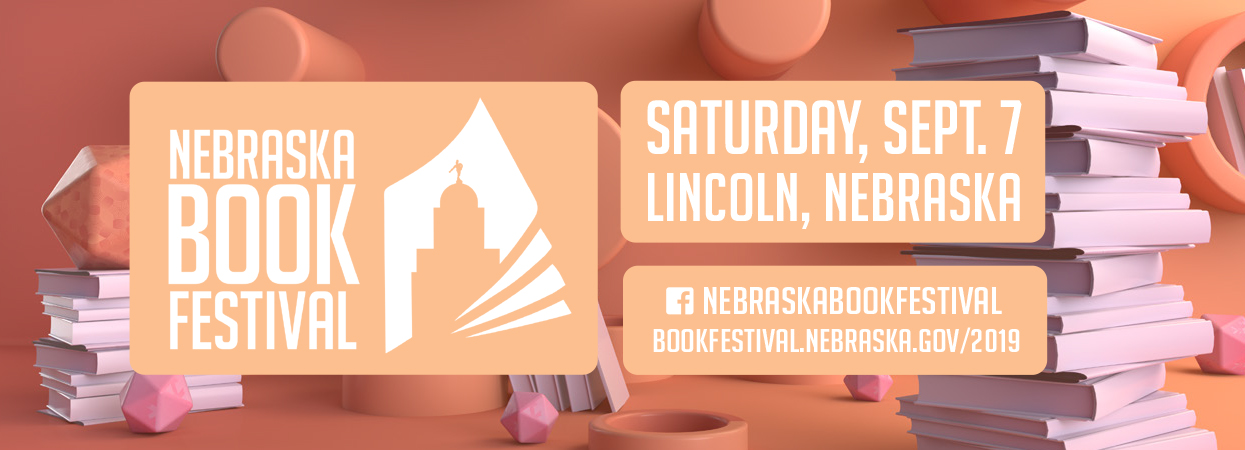
Genoways, Ted. This Blessed Earth. W.W. Norton, 2017.
Friday Reads – Palaces for the People by Eric Klinenberg
 It is unusual for libraries to be the subject of best-selling books and nationally distributed films. Though, in recent times, that has happened with the publishing of Susan Orlean’s The Library Book, Eric Klinenberg’s Palaces for the People, Emilio Estevez’s film, The Public, and Frederick Wiseman’s epic film documentary, Ex Libris.
It is unusual for libraries to be the subject of best-selling books and nationally distributed films. Though, in recent times, that has happened with the publishing of Susan Orlean’s The Library Book, Eric Klinenberg’s Palaces for the People, Emilio Estevez’s film, The Public, and Frederick Wiseman’s epic film documentary, Ex Libris.
In Palaces for the People, libraries are a subject not the subject. The book title comes from Andrew Carnegie’s philanthropic initiative to support the building of libraries as palaces of the people. Klinenberg contends that public libraries are essential to social infrastructure – defined as the “physical places and organizations that shape the way people interact.” Klinenberg, a sociologist, reflects on how common spaces, like libraries, can aid in repairing our degraded and fractured civic life. He points to a number of “palaces” vital to restoring the common good – parks, diners, farmer’s markets, churches, and more. As for libraries, Klinenberg writes that “Libraries are the kinds of places where ordinary people with different backgrounds, passions, and interests can take part in a living democratic culture.”
Klinenberg rightly recognizes that libraries are community places that have value for all – public programs, space for children and teens, reading spaces, broad-based reading materials, public computers, makerspaces, and much more. Some places are not for everyone, libraries are for everyone. Klinenberg says libraries are “the best case of a physical place that is open and accessible to everyone, regardless of age, ethnicity or race, social class, or even citizenship status. They’re places that are defined by generosity of spirit.”
Libraries are not what they could be. Budget reductions over time have taken their toll. Library funding at national, state, and local levels has declined or remained stagnant. Library staffing, public service hours, and collections have declined. A more positive thought is that libraries, resourceful as they are, have sought ways to increase and improve programming, explore new services, and demonstrate imagination in doing more with less. Klinenberg makes the case for social infrastructure investments. His contention is that financial support – investment – brings people together and builds stronger communities, just as important as public and private investment in the physical infrastructure of roads, bridges, and other components. Imagine what would be possible if times could change to add more funding to library budgets.
Eric Klinenberg is a professor of sociology and director of the Institute for Public Knowledge at New York University. He is the coauthor of the #1 New York Times bestseller Modern Romance and the author of the acclaimed books Going Solo and Heat Wave. He has contributed to The New Yorker, The New York Times Magazine, and This American Life.
Eric Klinenberg. Palaces for the People: How Social Infrastructure Can Help Fight Inequality, Polarization, and the Decline of Civic Life. Crown), 2018.




